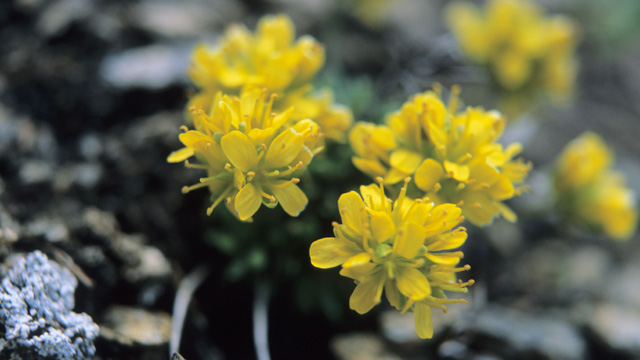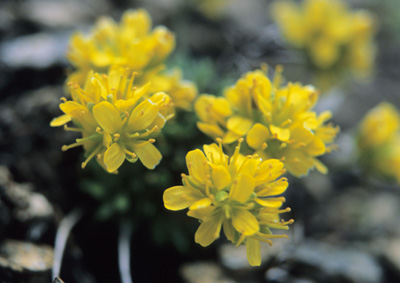Welsh native flowers at risk
A Welsh wildflower survey has found colour disappearing from the landscape at an alarming rate as native species are overrun by non-native plants


Little did the heroic plant hunters of 200 years ago realise how much trouble one of their trophies would cause.
On the Gower Peninsula in South Wales, a desperate-and, possibly, losing-battle is being fought to save the UK's only population of yellow whitlowgrass. The charity Plantlife says the dainty wildflower is being smothered by the invasive, non-native cotoneaster, which originates from China and the Himalayas and is also devouring juniper and basil thyme in the area.
Plantlife Cymru is also pressing the Welsh Assembly to review its agri-environment scheme, Glastir, which it describes as ‘badly flawed'; it says that Glastir should, as a publicly funded scheme, be delivering ‘a more diverse and resilient landscape' with better advice for farmers.

The UK's only population of yellow whitlowgrass, on the Gower Peninsula in South Wales, is being smothered by the invasive, non-native cotoneaster
The charity's new Welsh wildflower survey says ‘colour is being wiped from the countryside': 302 of 1,467 species are at risk of extinction, including prickly poppy, rough poppy, shepherd's needle, corn buttercup and catchfly, there are only small pockets of meadow grassland andcoastal areas are losing their botanical richness.
Pembrokeshire farmers David and Holly Harris, who have a small grassland holding, were in the earlier Tir Gofal scheme for 13 years, but report that they were only offered entry into the Glastir advanced programme after persistent lobbying and say they were ‘falling off an effective scheme into a black hole of uncertainty'.
‘Many farmers [in the same situation] have no option but to fertilise their pastures and increase stocking levels or they may abandon farming to allow more commercially minded farmers to take over the land,' they point out. ‘Wildlife conservation requires commitment.' Plantlife Cymru's Trevor Dines comments: ‘What's important is not how widely programme money is distributed or how many farmers are involved; it's how effective the scheme is at achieving its purpose.
Exquisite houses, the beauty of Nature, and how to get the most from your life, straight to your inbox.
We hope the Assembly will focus the scheme on the wild plants that underpin all our ecosystem services, such as pollination and flood control.'
* This article first appeared in Country Life Magazine on June 25 2014
* Follow Country Life magazine on Twitter
Country Life is unlike any other magazine: the only glossy weekly on the newsstand and the only magazine that has been guest-edited by His Majesty The King not once, but twice. It is a celebration of modern rural life and all its diverse joys and pleasures — that was first published in Queen Victoria's Diamond Jubilee year. Our eclectic mixture of witty and informative content — from the most up-to-date property news and commentary and a coveted glimpse inside some of the UK's best houses and gardens, to gardening, the arts and interior design, written by experts in their field — still cannot be found in print or online, anywhere else.
